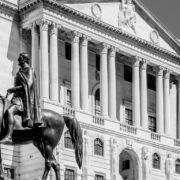When I wrote here a month ago about the outlook for mortgage rates, I noted that we were on the cusp of some important numbers which would determine where we were heading. One such bit of information was the next set of inflation figures, covering April, which were due to be published.
As I said then:
“The key question is not what happens to ‘headline’ inflation, which definitely should fall significantly this time after a couple of disappointments. If it does not, we really do have a problem. The question is what happens to so-called core inflation, excluding energy and food. It needs to show evidence of a fall before the Bank can start to relax.”
Those figures came and went and were just about as bad as they could have been.
Inflation fell, as predicted, to 8.7% but this was a disappointingly small drop. And that other key measure, “core” inflation, went up, from 6.2% to 6.8%, rather than down.
That was the first step in the repricing of mortgages by the markets. The second came with pay figures a few days ago, showing regular pay growth running at 7.2%, with growth in the private sector at 7.6%. Pay growth was temporarily boosted during the pandemic by furlough-related distortions but this was the fastest growth in normal times since current records began in 2001.
These figures ramped up expectations, not only of a further rate rise from the Bank of England this week, but the debate being also whether a 25 basis point move (0.25 percentage points) will be enough, or whether the Bank will have to go for 50.
Some members of its monetary policy committee (MPC) may vote for the larger increase, but the general expectation is for 25. That would be the 13th such move from the Bank, which has not skipped a chance to raise rates since December 2021, and would take official interest rates to a 15-year high.
Worse than that, as readers will know, is that money markets are now looking for a peak in Bank Rate of close to 6%, similar to the level expected after the disastrous Liz Truss-Kwasi Kwarteng mini budget last September. She has been saying that the media did not understand what she was trying to do. But, it seems, neither did the financial markets.
The consequences of these market shifts can be clearly seen, with the average two-year fix with a 75% loan to value now nudging above 6%, and five-year fixed moving towards 5.75%.
The current episode has already renewed the debate about whether the UK needs more longer-term fixed-rate products, with terms of 20 or even 30 years, as in some other countries.
I am not sure the Bank would welcome that, given that it is already concerned about the pass-through of its interest rate changes to the wider economy.
With the vast majority of mortgages now on fixed rates, it takes longer for rate hikes to impact on the economy. Andrew Bailey, the Bank governor, says that two-thirds of the rate rises so far have yet to affect the economy.
It looks like deep gloom. Many people with mortgages will face a severe hit and the government has ruled out an energy-style support package. Borrowers will have to cope, as will landlords, and for them and their tenants the outlook looks as grim as for mortgage borrowers.
But hang on for a moment. In the aftermath of the chaos last autumn, we saw financial markets and the mortgage market settle down. Markets are prone to these periods of extreme reaction. These bouts of near hysteria can pass. Will this one do so?
We are in a similar position to the one a month ago, awaiting an inflation release and a decision from the Bank. A rise in rates this week looks to be baked in. The question is whether the Bank tries to influence expectations of what comes next and pushes against those market expectations.
Economists, including former MPC members, think the peak in Bank Rate will be 5% or 5.25%, not the 6% being trailed by the markets.
The Bank, in its messaging this week, has a chance to pull down those rate expectations. If it does so, do not expect an instant reaction.
Things may become a little clearer after its next meeting in August, when it will also publish a new inflation forecast.
But the dangers of overkill are growing, as are the risks of really bad outcomes for the housing market, and the Bank should try to push against that.
























Comments